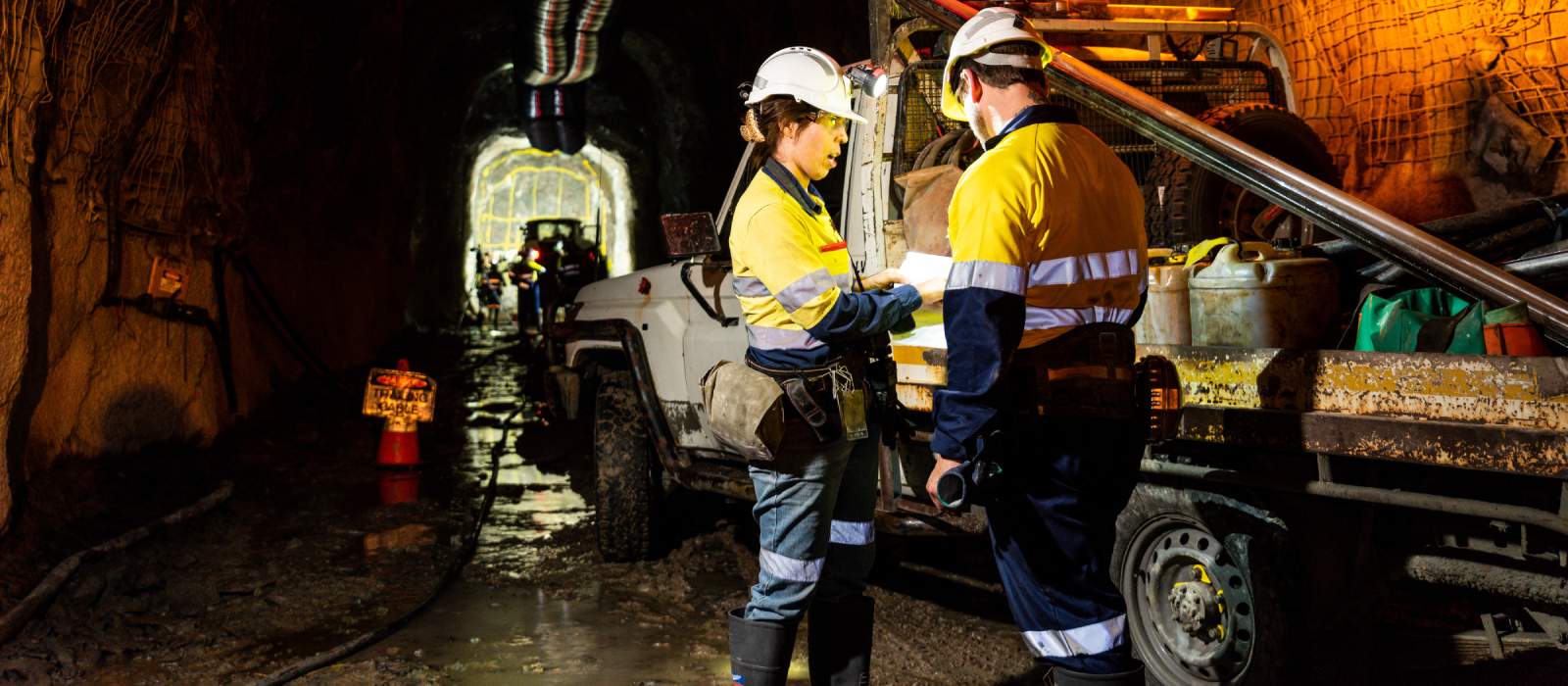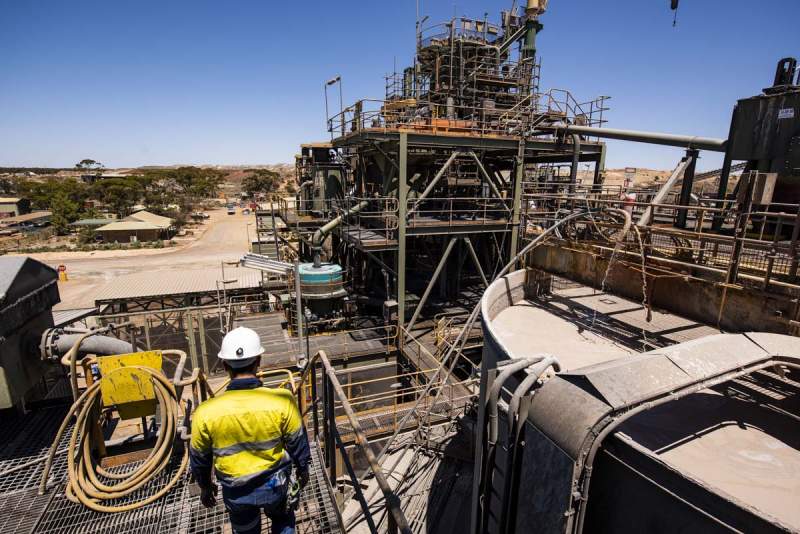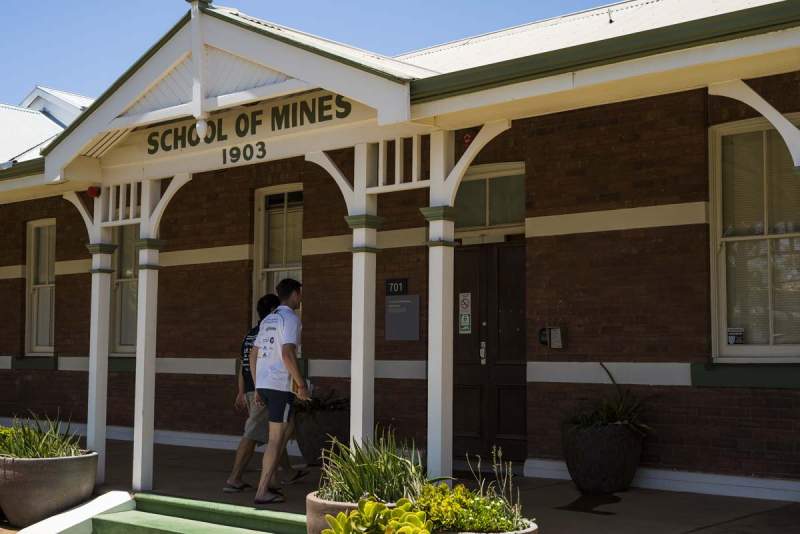Closing the skills gap in Australian mining

Research suggests industry and education institutions must work together to address the looming skills shortage in the resources sector
The impending skills shortage in the mining industry has been a well-recognised global problem for decades. A wealth of studies and articles detail statistics that anticipated the looming retirement of numerous professionals, as well as the steep decline in interest in mining-related disciplines at both undergraduate and postgraduate levels.
Wishing to explore these challenges in greater depth, Swann carried out a study to gain a better sense of the challenges faced within mining education and the broader industry. We interviewed academics and industry professionals to gain insight into students’ concerns about the industry; which subjects are currently covered in mining-related curricula; which skills will be required in the future; and how industry can help academia better attract, retain and equip students for careers in mining.
Our full study included responses from academics and industry professionals in the US, Canada, the UK and Australia, but this article focuses particularly on the data from Australia. It is also worth noting that the bulk of this research took place prior to the current COVID-19 pandemic. However, the overall importance of mining – and the role the industry will play during Australia’s economic recovery – is still of critical importance, and as such addressing the looming skill shortage remains vital.
The Australian outlook
It is clear in the responses we received and in recent news reports that Australia’s universities and mining industry are already working together in innovative ways. In spite of these new efforts, more needs to be done as the sting of the skill shortage will be felt particularly strongly in Australia where mining plays a critical economic and social role.
For context, Australia’s Australian Department of Industry, Science, Energy and Resources calculated that during the 2018-19 financial year, resource and energy exports accounted for nearly 60 per cent of the country’s total export earnings, with mining sector revenue reaching a record $279 billion. In its March 2020 quarterly report, the department noted that while the outbreak of COVID-19 will have some effect on its short-term forecasts, it was still predicting the overall long-term health of the resources sector in Australia, noting ‘a look at the bigger picture shows untold potential and a host of new opportunities as development progresses over the longer term in Asia, Africa and South America’ (2020).

The mining industry also contributes to a range of important areas within Australian society. In 2018, state governments throughout Australia experienced a rise in mineral royalties, with $12 billion collected and used to fund nurses, police, firefighters, teachers, infrastructure and other essential services.
Mining has helped Australia become a key player in the development of new technological and industrial innovations (MCA, 2019). This recent boom in mining has not only supported professional growth but has also led to an increase in new high-paying and high-skilled jobs within the industry.
While these are just a few measures of mining’s contribution, they indicate the necessity of building and maintaining a strong pipeline of talent, and understanding which skills will be needed in the rapidly changing industry. These are central to the Australian mining industry’s continued ability to lead, evolve and contribute domestically and globally.
The potential impact of the skills shortage on Australian mining has not gone unnoticed. In September 2019, the Australian Resource Energy Group AMMA issued a conservative prediction that 20 767 workers will be needed in the mining industry over the next five years (McCauley, 2019). The roles needed are varied and predicted to include 8660 mining plant operators, 2847 heavy diesel fitters, 4110 supervisors and other white collar roles as well as 970 other trades.
In response to the report, AMMA’s chief executive Scott Knott acknowledged that ‘securing the pipeline of skills to support mining project growth to 2024 will be a significant challenge’ and noted that ‘we must avoid a scenario where nationally significant mining projects are delayed by skills shortages, or competing for engineers, trades and skills operators with the $100 billion worth of infrastructure projects in Australia’s development pipeline’ (McCauley, 2019).
The need for greater planning and collaboration between industry, government and academia became apparent during our research. Australia’s Employment and Skills Minister Michaelia Cash noted that the government was ‘acutely aware of the workforce requirements in the Australian economy’, acknowledging that reforms to the vocational education and training (VET) sector were being implemented. Cash made it clear, however, that ‘workforce planning is not simply a problem for government’ and emphasised that industry needs to contribute.
Responses to the looming skills shortage
One of our interviewees, a director of a key mining-related institute, told us that every time the industry goes through a boom and bust cycle, it faces the same challenges of attrition and loss of interest in the industry. He noted that the industry’s short-term thinking leads not only to a lack of skilled professionals but also to soaring salaries, which ultimately cost companies more than an investment in talent development.
The need for greater investment in training, education and inspiration was emphasised in the responses Swann received from Australian academics and mining professionals.
This is reflected in the current state of enrolment in mining-related courses. The 2018 Minerals Tertiary Education Council (MTEC) report, published by the MCA, highlighted a significant decline in enrolment numbers in most higher education disciplines related to mining and metals since 2012. While 2012 and 2013 presented the highest-ever number of first-year enrolments in mining engineering at 267 and 265, respectively, the 2018 enrolment of 34 students was the lowest it has been since 2000. Interest in metallurgy programmes presents a similar story, with 24 students enrolling in first-year metallurgy programmes in 2018; this is also the lowest enrolment level for these programmes since 2000 (MCA, 2018). Poignantly, in 2018, only six students enrolled in mining engineering at the University of New South Wales, compared to 120 enrolments four years earlier (McHugh, 2019).

In line with other reports, Swann received a range of suggestions for the lack of interest in the mining industry. Reasons included:
- concern over the future of mining and not wanting to specialise in one industry
- reluctance to work in challenging environments and to such rigorous schedules
- discomfort with how mining companies have treated employees in the past
- awareness of the industry’s environmental and social performance
- interest in ‘new tech’ rather than ‘old tech’ and the draw of other industries.
The Australian responses received by Swann’s researchers align with those concerns expressed globally. Within Australia, however, such issues are starting to be addressed in both the public and private sectors. For example, Rio Tinto recently announced its partnership with Amazon, in a step toward addressing the skills shortage and promoting STEM subjects in schools, recognising the attractive nature of tech and other industries. Described by Rio Tinto’s CEO Jean-Sebastien Jacques as ‘bold and disruptive’, the $10 million program will identify education providers who will work with Amazon Web Services to support promising start-ups, bolster STEM numbers and bring greater attention to possible careers in the mining industry (Toscano, 2019).
Collaboration between academia and industry has proven effective in the past. In October 2018, Rio Tinto announced an $2 million investment in Western Australia to forge a new curriculum designed to prepare local students to take on jobs in the mining industry. Similarly, in 2017, Northern Star Resources announced that they were investing $50 million over ten years to support the development of an underground mining centre of excellence in Kalgoorlie.
Throughout Swann’s research, these sorts of partnerships with industry and the opportunities that they provide for students were described as the ‘most persuasive factor’ to students choosing to follow mining-related engineering programs at universities. Unsurprisingly, continued and increased support for such initiatives was repeatedly referenced in survey responses as a way of attracting students and encouraging them to continue in mining-related disciplines.
Industry-supported scholarships for mining-related disciplines were also referenced as being integral to the success of mining programs and their retention of students. Notably, however, it was also acknowledged that ‘throwing money’ at scholarships is not enough to make a serious dent in larger challenges of student attraction and retention. Indeed, scholarships and work experience are available in a range of STEM subjects that are also attractive to students.
As such, funding and developing researchers who are able to stimulate interest in mining-related topics and also to provide more nuanced support and encouragement in different areas will be essential to helping young professionals develop in an industry that is on the cusp of rapid technological change and which requires an evolving skillset.
More than one of our interviewees spoke about the ways in which funding research contributes to the development of new techniques and knowledge that will benefit the future of the industry, while also helping to attract, guide and inspire the next generation of bright professionals. In essence, long-term industry investment in research and teachers represents an underutilised and impactful approach to improving mining education, tackling the skills deficit and benefitting industry.
As we start a new decade, we are presented with the promise of new technologies and ideas alongside the evolving environmental, social and technical challenges of the natural resources industries. And who can yet say what new skills will be required in an economy in which we are likely to have to coexist with the coronavirus and its impacts? Against this backdrop, it will become increasingly important to embrace new approaches to collaboration, increasing support for innovative ways of understanding, developing and guiding the industry.
References
Australian Department of Industry, Science, Energy and Resources, 2020. ‘Resources and Energy Quarterly, March’ [online]. Available from: https://publications.industry.gov.au/publications/resourcesandenergyquarterlymarch2020/index.html
Minerals Council of Australia (MCA), 2018. Minerals Tertiary Education Council – Key Performance Measures Report 2018 [online]. Available from: minerals.org.au/sites/default/files/MTEC%20Key%20Performance%20Measures%20Report%202018.pdf
Minerals Council of Australia (MCA), 2019. Australia’s world-class mining industry sets new records in 2018 [online]. Available from: minerals.org.au/news/australia%E2%80%99s-world-class-mining-industry-sets-new-records-2018
McCauley D, 2019. More than 20,000 extra mining workers needed by 2024: report, The Sydney Morning Herald, 17 September[online]. Available from: smh.com.au/politics/federal/more-than-20-000-extra-mining-workers-needed-by-2024-report-20190916-p52rql.html
McHugh A, 2019. Tackling the skills shortage in Australia’s mining sector [online]. Available from: cormacconsulting.com.au/2019/05/tackling-the-skills-shortage-in-australias-mining-sector/
Toscano N, 2019. As a skills shortage looms, Rio Tinto and Amazon launch education fund, The Sydney Morning Herald,25 November [online]. Available from: smh.com.au/business/companies/as-a-skills-shortage-looms-rio-tinto-and-amazon-launch-education-fund-20191124-p53dj3.html